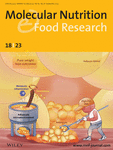Journal list menu
Export Citations
Download PDFs
Front Cover
Front Cover: Identifying Ferroptosis-Related Genes Associated with Weight Loss Outcomes and Regulation of Adipocyte Microenvironment
- First Published: 19 September 2023
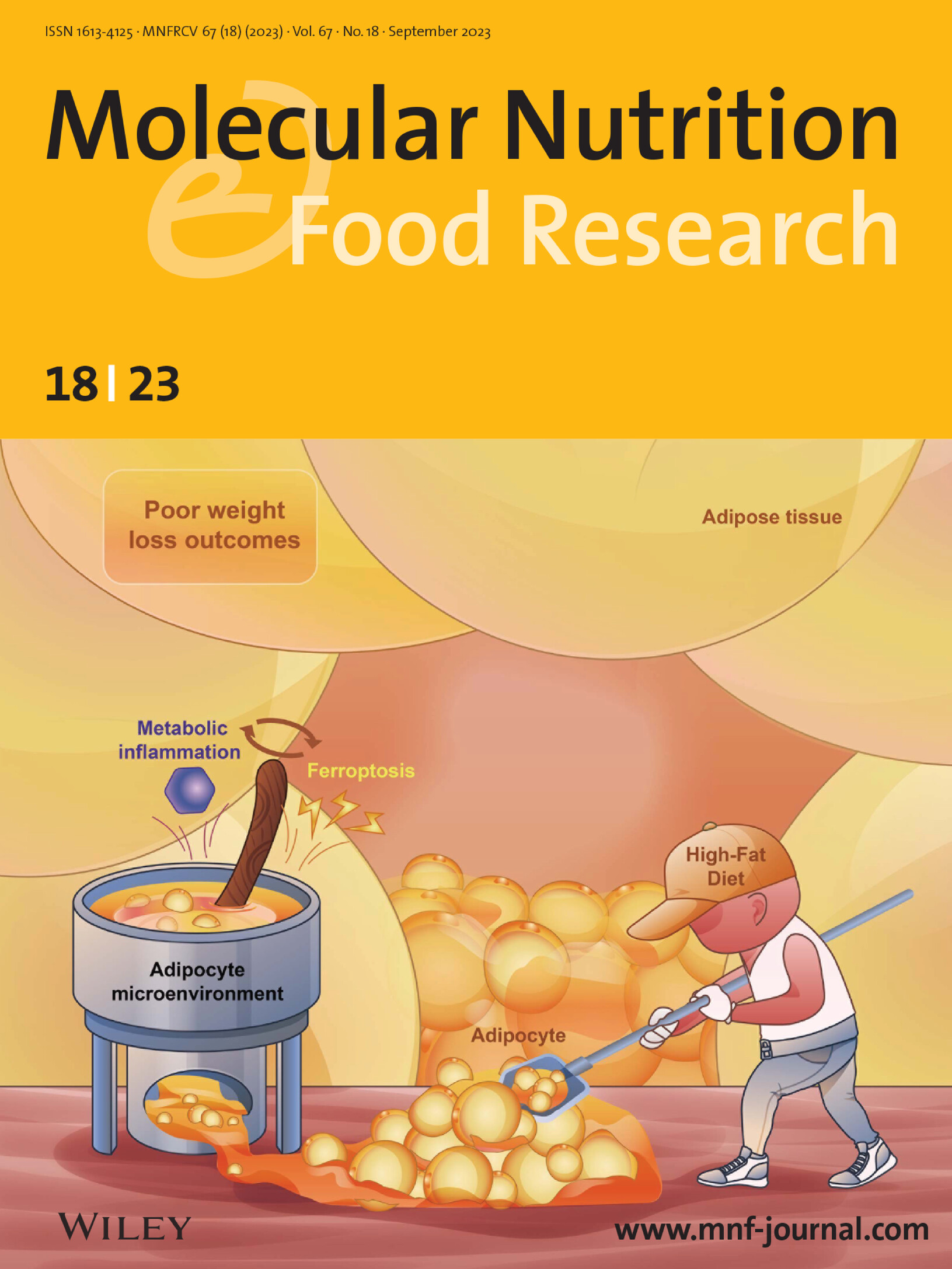
Mol. Nutr. Food Res. 2023, 67, 202300168
A high-fat diet leads to obesity, which affects the immune microenvironment of adipose tissue and promotes ferroptosis and metaflammation. During the weight loss process, if ferroptosis and metaflammation cannot be effectively reduced, the weight loss effect will be unsatisfactory, leading to weight rebound. This is reported by Wei Chen and co-workers in article number 2300168.
Editorial Board
Research Articles
Identifying Ferroptosis-Related Genes Associated with Weight Loss Outcomes and Regulation of Adipocyte Microenvironment
- First Published: 20 August 2023

Patients with poor outcomes have higher levels of ferroptosis in the adipose tissue. There is a significant infiltration of M1 macrophages in people with poor weight control. Remarkable differences in cytokine production, NF-κB transcription factor activity, leukocyte migration involved in the inflammatory responseare also observed. AKR1C1, NCOA4, and GCLC are identified as core predictive markers and theses expression patterns.
Dietary Eicosapentaenoic Acid Containing Phosphoethanolamine Plasmalogens Remodels the Lipidome of White Adipose Tissue and Suppresses High-Fat Diet Induced Obesity in Mice
- First Published: 13 July 2023
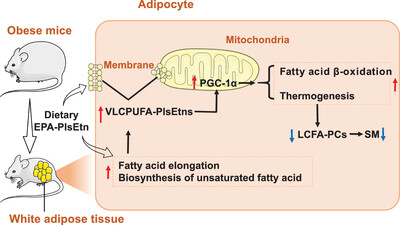
Dietary eicosapentaenoic acid containing phosphoethanolamine plasmalogens (EPA-PlsEtns) remodel lipid profiles and regulated fatty acid metabolism in white adipose tissue (WAT) of obese mice. The upregulation of fatty acid elongation and biosynthesis of unsaturated fatty acid reactions by EPA-PlsEtn supplementation lead to the increased very long-chain polyunsaturated fatty acid (VLCPUFA)-PlsEtns content in WAT, which may further enhance fatty acid catabolism. These changes ultimately reduce over-fat loaded in WAT.
Dietary Apigenin Relieves Body Weight and Glycolipid Metabolic Disturbance via Pro-Browning of White Adipose Mediated by Autophagy Inhibition
- First Published: 12 July 2023
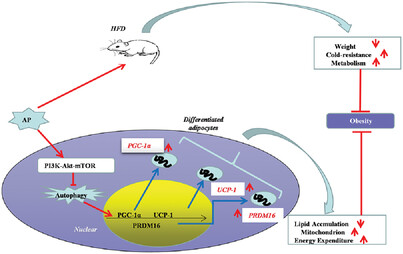
Apigenin (AP) treatment alleviates the body weight, glycolipid metabolic disorder, and insulin resistance in the obese mice, which is contributed to the pro-browning effects of AP. Moreover, the study finds that the pro-browning effect of AP is accomplished through autophagy inhibition mediated by the activation of PI3K-Akt-mTOR pathway.
Ethanol Extract of Citrus grandis ‘Tomentosa’ Exerts Anticancer Effects by Targeting Skp2/p27 Pathway in Non-Small Cell Lung Cancer
- First Published: 12 July 2023

Citrus grandis ‘Tomentosa’ (CGT), the immature fruit of Citrus grandis (L.) Osbeck, has been used in traditional Chinese medicine to treat cough and phlegm. This study finds that the ethanol extract of CGT (CGTE) markedly inhibits the activity of Skp2-SCF E3 ubiquitin ligase and promotes the accumulation of its substrate p27, thereby inhibiting proliferation of non-small cell lung cancer (NSCLC) cells.
The Effect of Free and Protein-Bound Maillard Reaction Products N-ε-Carboxymethyllysine, N-ε-Fructosyllysine, and Pyrraline on Nrf2 and NFκB in HCT 116 Cells
- First Published: 19 July 2023
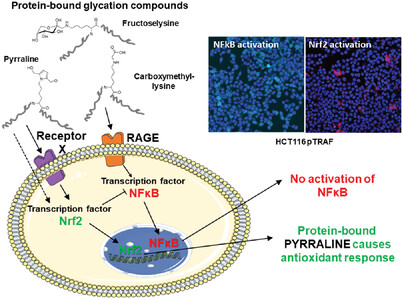
Protein-bound Maillard reaction products are assumed to interact with the receptor for advanced glycation endproducts (RAGE) and initiate inflammation. The structural basis for this interaction is scarcely studied. Lysine residues in casein were selectively modified to carboxymethyl lysine, fructosyllysine, and pyrraline. In human colon cancer cells, none of the modified caseins activates RAGE, but pyrraline-casein shows Nrf2 activation.
Micronutrients in High-Fat Diet Modify Insulin Resistance and Its Regulatory Genes in Adult Male Mice
- First Published: 01 August 2023
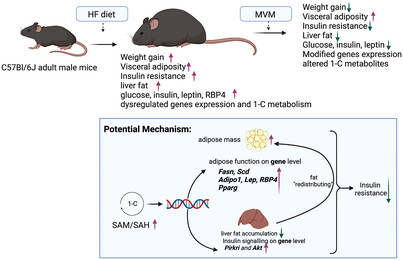
The addition of a micronutrient mix (MVM) to a high-fat diet (HFD) reduced body weight gain, insulin resistance, fasting glucose, insulin, C-peptide, leptin, and hepatic triglyceride concentrations in obese mice. Furthermore, both HFD and MVM modify the expression of genes related to insulin regulatory pathways and adipose function pathways in tissues, associated with altered hepatic one-carbon metabolites.
Lactiplantibacillus plantarum ZJ316 Reduces Helicobacter pylori Adhesion and Inflammation by Inhibiting the Expression of Adhesin and Urease Genes
- First Published: 23 July 2023
Remodeling of Gut Microbiota by Probiotics Alleviated Heat Stroke-Induced Necroptosis in Male Germ Cells
- First Published: 16 July 2023

The research focuses on the adverse effects of high temperature environments on humans and animals. In terms of the inflammatory cytokines released by the intestine to induce testicular necroptosis, the research finally identifies a way that regulates gut microbiota to maintain intestinal health and then relieves testicular heat stress.
Pterostilbene Enhances Thermogenesis and Mitochondrial Biogenesis by Activating the SIRT1/PGC-1α/SIRT3 Pathway to Prevent Western Diet-Induced Obesity
- First Published: 23 July 2023
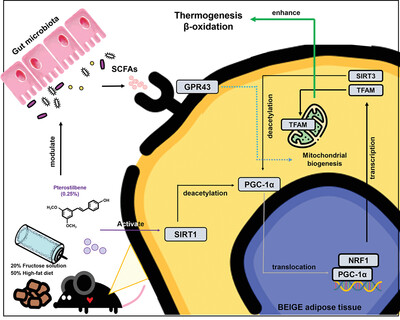
SIRT1/PGC-1α pathway activation is known to promote thermogenesis and mitochondrial biogenesis. A model of Western diet-induced obesity supplemented with pinostilbene (PIN) or pterostilbene (PSB) in mice is designed. Both PSB and PIN are potential candidates for the improvement of obesity and gut microbiota dysbiosis. PSB exerts a greater effect than PIN by promoting thermogenesis and mitochondrial biogenesis via SIRT1 activation.
Association of Short-Chain Fatty Acids with Gut Microbiota and Lipid Metabolism in Mice with Diarrhea Induced by High-Fat Diet in a Fatigued State
- First Published: 25 August 2023
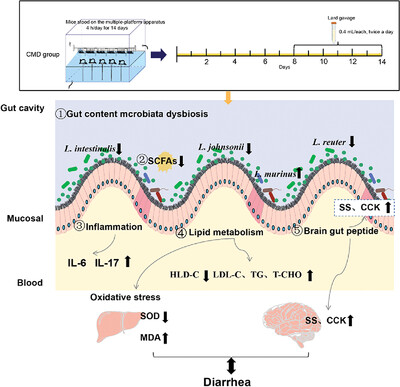
The gut microbiota and their metabolites may participate in the development of diarrhea by regulating the expression of inflammatory factors. Therefore, the study concludes that the pathogenesis of diarrhea mainly depends on the following pathways: 1) gut contents microbiota disorder; 2) abnormal lipid metabolism; 3) inflammation; 4) metabolite-SCFAs reduction; 5) brain-gut peptide dysfunction.




